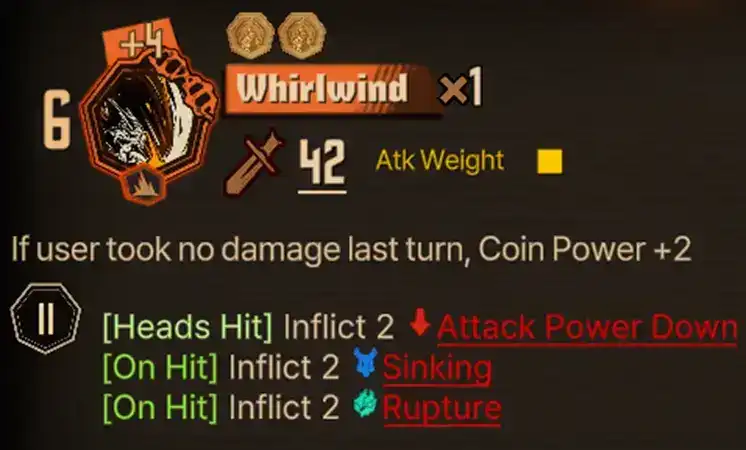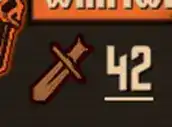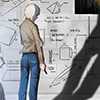Foreword
Limbus Company is a third game from studio Project Moon and its story takes place after events of Library of Ruina ended however knowledge of previous games is not needed as thanks to amnesiac at the start, main character Dante, all the world nuances are and will be explained. There are two things that need to be explained first due to their importance. Combat and Gacha.
Combat
Core of the Limbus gameplay is combat which is not really best explained by tutorials. Combat consists of a mechanic called “Clashes”. Clash happens when 2 skills oppose each other. In Focused Encounters (encounters against abnormalities or bosses) players can select which sinner skills should clash with enemy skills granted sinner’s speed is faster to freely select clashes. In Limbus, character speed is “rolled” every turn. Each Identity has their own “speed range”, like let's say from 3 speed to 7 speed, and each turn game will roll a number between said 3 to 7 in this case. If speed of sinner is equal or lower than speed of the enemy, enemy will target their original target and “intercepting” that attack will mean only targeted sinner will be able to clash and not always targeted sinner will be able to win clashes. Clash looks like in the picture below:

Each Sinner Identity has six skills and one defensive skill. Three Skill 1 (S1) that are generally the weakest, two Skill 2 (S2) whose power vary from Identity to Identity and one Skill 3 (S3) which are generally the strongest or have the main strength of Identity tied to them. There is also always available defensive skill, from which there are three kinds: Evade, Guard and Counter. To get it simply click character portrait and defensive skill will replace 1st in slot normal skill.
Each skill has a certain amount of “Coin” attached to them. Combination of Skill Base Power and Power from the Coins results in Final Power. For example, let's take a look at [LCB Sinner] Hong Lu S3:

This skill has Base Power of 6 and two coins each having a value of 4. When skills clash or skill is about to do damage, skill coins can flip Heads or Tails, which will determine Final Power. Skill above has Base Power of 6 meaning this is the lowest value the skill can roll if both coins flip Tails. However if both coins from the Whirlwind flip Heads, skill Final Power will result in 14. Certain skills have additional conditions that can boost their power in various ways, like in example above, Hong Lu coins will turn to 6, from 4, if he did not take any damage previous turn.
Can skill power be increased by other means? Yes. There are two ways.
Offense Level

Offense Level is indicated by a sword icon under the name of the skill. When the difference between Offense Level for either side is higher by 3, power of the skill IN CLASH will increase by one. It will increase further by another 3 Offense Level Difference. So 9 Offense Level difference will result in additional 3 Clash Power.

In this example, Liu Rodion skill “Fiery Knifehand-Combust” has Offense Level of 42 but enemy skill “Don’t You Stop Now” has 45 Offense Level, meaning they get +1 Clash Power, indicated by the glowing yellow number.
Resonance
Second way of increasing Skill Power that also ties into Offense Level, is Resonance, a mechanic poorly explained by in-game tutorial.
There are two types of Resonance. Resonance and Absolute Resonance. Resonance happens if two or more skill of the same Sin affinity are used on the dashboard but are not directly after each other, like in example below showing Wrath Resonance, as three Wrath Skills are used:

What normal resonance does, is increase the Offense Level of each skill after the first one, by 1. In the picture above, the first Wrath Skill gets 0 bonus Offense Level, second skill gets +1 and third skill gets +2.
Then there is Absolute Resonance. It happens when three or more skills are matched on the dashboard and are after each other.

Unlike normal resonance, Absolute Resonance boosts Offense Level of EVERY skill in the chain, by the fixed amount, depending on the length of the chain (3 skills is 3 Offense, 4-5 is 5 Offense, 6-7 is 7 Offense and so on). Let's go back to Liu Rodion’s clashing Skill:

Due to Absolute Resonance consisting of 6 Wrath Skills, her Offense Level increased from 42 to 49 which puts her 4 Above enemy’s Offense Level and now it is Rodion who receives +1 Clash Power.
Defense Level Calculation
On top of Offense Level there is also Defense Level but it does not matter for the Clash. It only affects received damage and Defensive skills. Below are the calculations of how Defense Level and Damage are calculated together:
(Offence Level - Defense Level) ÷ (|Offence Level - Defense Level| + 25) X 100%
- When the Defense Level is 5 higher than the Offense Level: About -16%
- When the Defense Level is 10 higher than the Offense Level: About -28%
- When the Defense Level is 30 higher than the Offense Level: About -54%
- When the Defense Level is 50 higher than the Offense Level: About -66%
- When the Defense Level is 100 higher than the Offense Level: -80%
There is one more mechanic tied to Combat and affects chances of Coin flipping Heads or Tails. It is called Sanity (SP in short).
Each sinner has a Sanity and majority of the fights, everybody starts at 0 Sanity:

Sanity is indicated by the circle with blue number in the right bottom corner of the character’s icon.
Sanity can go up to 45 or -45. Each point of sanity increases, or in case of negative sanity decreases, chances to flip Heads. So at 0 SP, Sinner has 50% chance to flip heads while at 45 Sanity, chances to Flip Heads rise to 95%. Sanity can be increased by reasons like winning a clash or killing an enemy. Certain Identities can have different Sanity gain and losses requirements, noted in their “Sanity” page, for example here is Liu Rodion’s Sanity page:

Gacha
Limbus is in a weird spot in comparison to other gachas out there. Limbus monetization comes not from Gacha itself but rather Battle Pass that is heavily tied to the gacha system itself but let’s start with gacha itself.
“Extraction” is the gacha system of Limbus where you use a resource called “Lunacy” to pull (130 per single pull, 1300 for multi). There are in a way four rarities of things you can get:
- 1. 0 Rarity, Base Identities (LCB versions of Sinners)
- 2. 00 Rarity of Identities
- 3. 000 Rarity of Identities
- 4. E.G.O.
Rates look as follow:

However, when you pull E.G.O., it will be removed permanently from the pull, increasing chances of other rarities as follows:

Pity in Limbus is set at 200 rolls. At 200 you can exchange “Ideality” for an Identity you want. When banner ends and “Ideality” has not been spent, it will be converted to Thread, used to upgrade Identities and E.G.O.
However, unlike other gacha games, generally every Identity and E.G.O. that will appear as a banner can be “Sharded” as in, use Sinner specific shards to just obtain what you want. And here is where Battle Pass comes in. Outside of its normal rewards like materials and E.G.O., once Battle Pass reaches level 120, each level afterwards rewards players with box of selectable Sinner Shards. Those shards can be exchanged for Identity or E.G.O. you want in rates of:
- 400 shards for 000 Identity of E.G.O
- 150 shards for 00 Identity
Because of Battle Pass it is possible to obtain every Identity and E.G.O. from the game without touching the gacha system itself.
Battle Pass levels.
How do you farm Battle Pass levels then one may ask? Mirror Dungeon.
Mirror Dungeon is farmable content that unlocks after chapter 2 and upon completing the run of it, players obtain Battle Bass points that turn into Battle Pass levels.
Because of that, 11$ price of Battle Pass in Limbus over time pays off massively and even spending Lunacy on “Stamina” which is called in Limbus “Enkephalin” is considered a better option than using Lunacy for rolling with one exception.
Every three months there is an event called Walpurgisnacht. Something akin to “Limited banner”. It is different from normal banners because when new Identities or E.G.O. appear in this banner, you can only roll for those. You can’t “Shard” stuff until the next Walpurignacht event comes. So it is generally advised TO SAVE LUNACY FOR WALPURGISNACHT as Identities and E.G.O. in it are quite good.
General rules of thumb when it comes to gacha:
- Do not pull on E.G.O. banners – Due to how rates interact with E.G.O., at one point they will appear in your rolls when you roll for Identities and it is a waste to roll for E.G.O., specifically or “Shard” it.
- Do not use single pulls – Only multi pull has a 00 guaranteed. Exception is Daily pull that is using “Paid Lunacy”.
E.G.O., Corrosion and Overclock
E.G.O
E.G.O are basically your special skills that require you to use a certain amount of sins, generated when skills are used. To access “E.G.O screen” press and hold Identity portrait. Once done, screen like below will pop up, showing all currently equipped E.G.O:

After selecting E.G.O, in this case 4th Match Flame Ryoshu, 4 Wrath and 2 Pride will be used to make this E.G.O appear in skill chain:

4 Wrath and 5 Pride we had got reduced to 0 Wrath and 3 Pride:

Now 4th Match Flame Ryoshu E.G.O appears in the chain and can be used:

Different multiple E.G.O from same Sinner can be used in a chain provided they have enough skill slots:

Using E.G.O changes Sin resistances of a Sinner, as indicated below E.G.O screen:

On top of using Sin Resources, also consumes a certain amount of SP, varied from E.G.O to E.G.O. 4th Match Flame uses 20 SP, meaning Ryoshu would go from 22 to 2 SP so keep in mind Sanity of Sinners when using E.G.O because not only their chance to land heads goes down, but also once their SP goes into negatives, they may Corrode.
Corrosion
Corrosion turns Sinner uncontrollable and replaces their Identity skills with Corroded Version of Skill. Every E.G.O has Awaken skill (controllable and relatively safe) and Corrosion (generally uncontrollable and which power sometimes is better or worse than Awaken version). Corrosion in many cases have wording [Indiscriminate] included in their description, meaning friendly fire will happen. As long as Sinner’s SP is high, there is no worry for Corrosion however, as mentioned, sometimes the Corroded version might be stronger than Awaken, then what if we want to use Corrosion? In such cases we can use Overclock.
Overclock
Overclock lets players use a Corroded version of an E.G.O skill without worrying about friendly fire. To activate Overclock, when seeing all the Sinner E.G.O simply press and hold on the E.G.O you want to use:

Overclock requires player to spend 1.5x more resources (as in picture above, Blind Obsession Ryoshu normally costs 2 Gloom, 2 Pride and 2 Envy but Overclock changes it to 3 Gloom, 2 Pride and 2 Envy) and also increases Sanity Drain by 1.5x. If player has enough E.G.O resources for Awaken version, but not for Overclock, it is still possible to Overclock E.G.O however it will force Corrosion:

In such a case, E.G.O will use a Corroded version of Skill, however it will retain [Indiscriminate] part of the Attack meaning it can damage friendly sinners. Paying attention to Sin owned, SP of the sinners and when to Overclock if needed is a vital part of certain fights, helps certain status teams and lets players clear Refraction Railway faster in some cases.
Terminology
Now that 2 core things of Limbus are covered, let's explain weird terms that game is using and that might confuse players:
- Enkephalin – As already explained above, it is equivalent to “Stamina”. Only story modes use it, otherwise it can be converted to “Modules” that are used in other game mods.
- Experience Tickets – Used to level up Identities, increasing their Health, Defense and Offense Levels.
- Experience Luxcavation – Stage that consists of a certain amount of stages that upon completion grants Experience tickets. Higher levels of Luxcavation grants more tickets.
- E.G.O – Think of them as powerful skills that can be used on a certain amount of Sins that have been accumulated. Sins can be accumulated by using skills that are corresponding to said sins. For example, using Wrath Skill gives 1 Wrath Affinity Resource, so E.G.O that needs 2 Wrath to be used means you have to use two Wrath Skills first. Using E.G.O skill and if E.G.O. is at Threadspin Level 2, will provide Identity with a passive that will last until the end of the battle. Passives stack, so using TETH E.G.O. and HE E.G.O will result in 2 passives being now active.
- E.G.O Shards – As it was explained above, E.G.O. Shards are used to “Shard” or buy Identities / E.G.O. from the Dispenser but also are used to Uptie Identities and Threadspin E.G.O
- Mirror Dungeons – Roguelike mode that rewards players with Lunacy (3 times 250 per week). Additionally clearing Mirror Dungeon, as it was explained, awards Battle Pass points, those turn into levels and levels mean Shard Boxes if Battle Pass reaches level 120. Gamemode where players will spend the majority of their time.
- Lunacy – Currency used for rolling gacha, refilling Enkephalin and buying battle pass. Lunacy can be separated into Free Lunacy (earned via gameplay or from compensation) and Paid (bought in shop)
- Refraction Railway – Endgame mode that happens once a season and lasts until the next Refraction Railway comes in. It is a mode where a certain amount of fights need to be cleared in X amount of turn, varying from Railway to Railway, in order to obtain rewards like Shard Boxes or Guarantee Seasonal 000 Identity tickets.
- Thread – Used to “Uptie” Identities to higher Tiers, unlocking more skills and making them more powerful or to “Threadspin” E.G.O to higher Tiers, making those more powerful
- Thread Luxcavation – Fight against Abnormality, rotates every day. Winning grants a certain amount of Thread. Unlike Experience Luxcavation, this one has a 3 times daily bonus that grants bonus Thread for the first 3 fights per day
Team Building
Team Building in Limbus is centred around “status” teams, where each Identity is applying the same status, like Burn or Sinking, use the same “resource” like Poise and Charge, or teams that can pull off resonance of certain sin regularly, like Pride. Of course, a team made out of strong but not synergizing Identities can also work. To see examples of said teams, please refer to our “Team Building Guide”.





